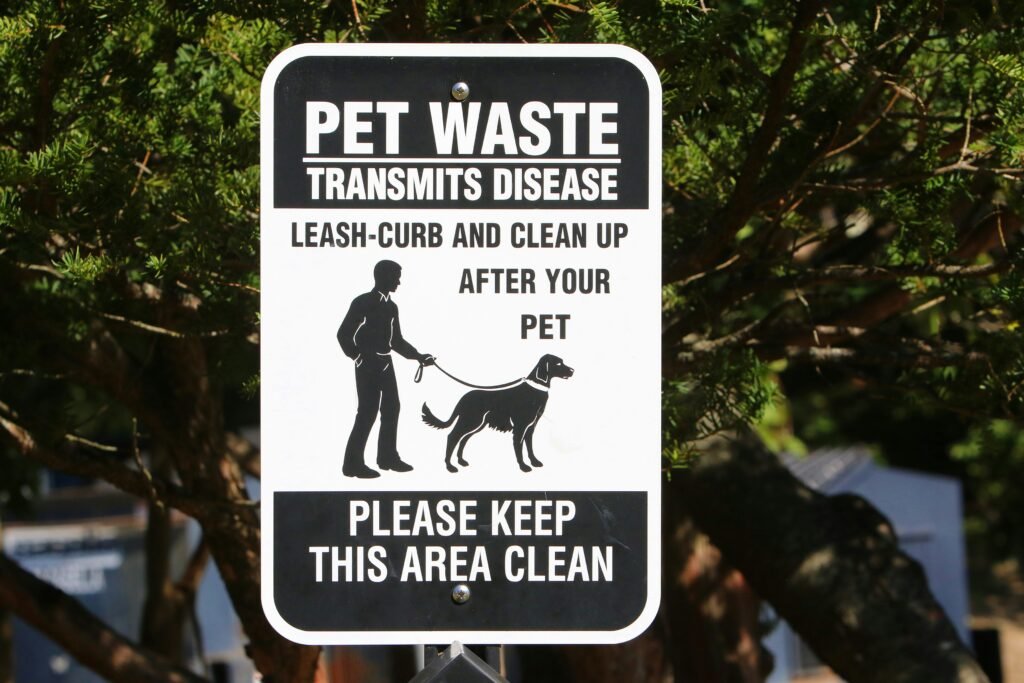
Introduction to Pet Illness Symptoms
As loving pet owners, it is our duty to be vigilant about the health and well-being of our companions. Pets, unlike humans, cannot express their feelings or discomfort through words; therefore, they often rely on their owners to recognize the early signs of illness. Being attentive to the subtle changes in a pet’s behavior or physical state is essential for ensuring their longevity and overall health. By understanding pet illness symptoms, owners can intervene early, potentially preventing serious health issues down the line.
In many cases, pets may exhibit signs of sickness that can easily be overlooked. It is important to be observant of any alterations in their regular routines, including changes in appetite, energy levels, or behavior. These adjustments can be indicators of underlying health problems requiring prompt attention. Furthermore, recognizing these early markers can not only improve a pet’s chances of recovery but also reduce the financial burden associated with treating advanced stages of illness.
This blog post aims to outline the top 10 signs of pet illness that every owner should be aware of. By familiarizing yourself with these indicators, you’ll be better equipped to identify when your pet may need professional veterinary care. Additionally, we will offer guidance on when to seek help from a veterinarian, allowing for timely interventions that can make a significant difference in your furry friend’s health and wellbeing. It is vital that owners do not dismiss seemingly minor symptoms, as they could lead to more significant health issues. Through this comprehensive exploration of pet illness symptoms, our goal is to enhance your awareness and understanding, ultimately ensuring that your beloved companion remains healthy and happy.
Changes in Appetite
One of the most noticeable signs that your pet may be experiencing health issues is a sudden change in appetite, whether it be an increase or decrease. Such fluctuations can be early indicators of underlying conditions that warrant prompt attention. Pets may refuse their food or stop eating entirely, which could stem from a variety of causes, ranging from dental problems to more severe health concerns like infections or metabolic disorders. Conversely, an unexpected increase in appetite could indicate conditions such as diabetes or hyperthyroidism.
Dental issues are quite common among pets, particularly as they age. Problems such as gum disease, tooth decay, or oral infections can result in discomfort and pain while eating, leading to food refusal. Observing your pet’s eating behavior closely can help identify these issues. If your pet displays reluctance to chew or exhibits signs of pain while eating, it is crucial to consult with a veterinarian for a thorough dental examination.
Infections and metabolic disorders should also be considered when noting changes in appetite. Conditions such as pancreatitis, liver disease, or kidney dysfunction can lead to significant weight loss or a decline in appetite, necessitating veterinary intervention. Monitoring your pet’s weight and overall condition regularly can provide vital information for your vet. If you notice marked weight loss or a drastic change in feeding habits lasting more than 24 hours, it is imperative to reach out to a veterinary professional immediately.
In addition to monitoring their food intake, pay attention to other behavioral changes. Increased thirst, lethargy, or changes in bathroom habits can accompany alterations in appetite and provide further clues to your pet’s overall health. Knowing these can help you relay important information to your veterinarian to facilitate accurate diagnosis and treatment.
Lethargy and Weakness
Lethargy is one of the most significant indicators that a pet may be unwell. It is characterized by a noticeable decrease in energy levels and activity. While some degree of lethargy can be common in pets after vigorous play or during particularly warm weather, there are distinct differences between normal fatigue and abnormal lethargy. Abnormal lethargy manifests as an ongoing lack of enthusiasm for usual activities, such as playing, walking, or engaging with family members.
When evaluating your pet’s behavior, it is crucial to consider any changes in their typical energy levels. For instance, if your normally active dog prefers to lie down for extended periods or shows little interest in food or outdoor time, this could signify an underlying health issue. It is important to carefully observe any accompanying signs such as weakness, reluctance to move, or changes in appetite. These factors can help determine the severity of your pet’s lethargy.
There are numerous possible causes for lethargy in pets, ranging from benign fatigue to serious health concerns. Common medical conditions include infections, anemia, or internal disorders. Pain caused by injuries or chronic conditions like arthritis can also lead to decreased energy levels. Additionally, medications, particularly those that may sedate or affect metabolism, can contribute to a noticeable decline in activity. Identifying the exact reason for your pet’s lethargy may require observations of additional symptoms, such as vomiting, diarrhea, or coughing.
In cases where lethargy persists beyond a day or is accompanied by other concerning symptoms, it is advisable to seek veterinary assistance promptly. Early intervention is critical for many conditions, offering the best chance for successful outcomes. Observing your pet carefully and consulting with a veterinarian can ensure their health and well-being are prioritized.
Vomiting and Diarrhea
Vomiting and diarrhea are among the most common gastrointestinal symptoms seen in pets, and they can indicate a variety of health issues. While occasional vomiting or diarrhea may not be a cause for concern, persistent cases warrant immediate attention. Understanding the differences can help pet owners react appropriately when their furry friends exhibit these symptoms.
Occasional vomiting might occur due to dietary indiscretion, such as eating spoiled food or unfamiliar treats. Similarly, a transient episode of diarrhea could arise from a sudden change in diet or stress. However, when these symptoms persist for more than 24 hours, they could signal more serious underlying health problems. Potential causes of chronic vomiting and diarrhea in pets encompass a range of conditions, including infections, pancreatitis, gastrointestinal obstruction, or even parasites.
Pet owners should also observe additional signs accompanying vomiting or diarrhea. Symptoms like lethargy, decreased appetite, fever, or noticeable pain can indicate a more severe issue that requires veterinary intervention. In some cases, the presence of blood in the vomit or feces can be particularly alarming and is a definitive indicator that a veterinarian should be consulted without delay.
When encountering vomiting and diarrhea in pets, it is advisable to track the frequency and severity of these symptoms, along with any other associated signs. Keeping a detailed log can provide valuable information for veterinary evaluations. Additionally, before attempting any home remedies, it is crucial to consult with a veterinarian, as misguided treatments might exacerbate the condition.
In conclusion, while vomiting and diarrhea can occasionally occur without significant consequences, persistent symptoms necessitate prompt attention. Vigilance regarding your pet’s health and an understanding of these signs play a vital role in ensuring their well-being.
Changes in Behavior
This section explores the significance of behavioral changes in pets, which can often be indicators of underlying physical or mental health issues. Pet owners frequently observe shifts in their animals’ behaviors, such as increased aggression, withdrawal from social interactions, or signs of anxiety. These alterations are crucial observations that may signal that a pet is unwell and should be investigated further.
Increased aggression can manifest as growling, biting, or snapping when the pet is approached or handled. This shift may result from pain or discomfort that is difficult for the owner to detect. Similarly, a normally sociable pet displaying sudden withdrawal may be experiencing emotional distress or health complications that induce fear or uncertainty. Anxiety in pets may also showcase itself through excessive barking, destructive behaviors, or pacing. Noting these changes is imperative, as they often hint at not just physical ailments but also emotional challenges the pet may be facing.
To properly assess these behavioral alterations, the first step for pet owners is to observe their animals closely. Documenting the frequency and context of the observed behaviors can provide valuable information for veterinarians. Additionally, changes in routine such as a shift in feeding habits, sleep patterns, or interactions with other pets can further indicate the extent of the illness. Consultations with a veterinarian are essential, as they can help decipher whether these behaviors are a response to pain, stress, or other conditions that require medical intervention.
Being proactive and observant allows pet owners to ensure their beloved companions receive the appropriate care. By understanding that behavioral changes often correlate with health issues, pet owners can act quickly and seek veterinary advice, fostering a healthier, happier pet.
Excessive Thirst and Urination
Excessive thirst, clinically referred to as polydipsia, accompanied by increased urination, known as polyuria, can be significant indicators of underlying health issues in pets. These symptoms often suggest that a pet may be coping with various health conditions, including diabetes mellitus or kidney disease. When a pet experiences polydipsia, they will typically consume an unusually high amount of water beyond their normal intake. This increase in fluid consumption can lead to polyuria, where the pet subsequently urinates more frequently and in larger volumes.
Diabetes, for instance, occurs when a pet’s body cannot effectively utilize glucose, leading to elevated blood sugar levels. This condition can result in increased thirst as the body attempts to compensate for the excess glucose by diluting it through water absorption. Similarly, kidney disease can hinder the organ’s ability to filter waste and regulate water balance, causing a pet to drink more water to counteract fluid loss. Observing these symptoms is vital, as they can point to serious health concerns that necessitate immediate veterinary attention.
Pet owners should diligently monitor their furry companions’ water intake and the frequency of urination. A marked increase in these behaviors—such as drinking more than usual or urinating inappropriately—should prompt an evaluation by a veterinarian. It is recommended to keep a record of the fluid intake and urination patterns, as these details can provide valuable context during a veterinary visit. Additionally, early diagnosis and intervention often lead to more favorable outcomes. Being attentive to these signs can ultimately safeguard a pet’s health. Regular check-ups with a veterinarian can help ensure that any potential issues are identified promptly, allowing for timely management of the condition.
Coughing and Breathing Difficulties
One of the critical indicators that a pet might be unwell is the presence of coughing or other respiratory issues such as wheezing or labored breathing. These symptoms can arise from various potential causes, ranging from benign to severe, and require careful attention. It is essential for pet owners to understand that coughing in pets may not always be due to a respiratory infection; it can also signal allergies, asthma, heart disease, or even airway obstructions. These variations warrant close monitoring to determine the appropriate course of action.
When a pet exhibits coughing, observing the symptom’s frequency and severity is crucial. For instance, a single cough occasionally may not be alarming, but persistent coughing, especially if accompanied by wheezing or difficulty breathing, calls for immediate veterinary attention. Additionally, pay close attention to other signs that might accompany these respiratory symptoms, such as nasal discharge, lethargy, or loss of appetite, as they can provide vital clues to the underlying issue.
If you suspect your pet is experiencing breathing difficulties, there are specific steps you can take at home while preparing for a visit to the veterinarian. First, ensure your pet is in a comfortable and stress-free environment. Avoid exposing them to potential allergens like smoke, dust, or strong fragrances. Additionally, track the episodes of coughing and any observable patterns, as this information can be invaluable for your veterinarian when diagnosing the issue.
In summary, respiratory symptoms in pets, particularly coughing and difficulty breathing, should never be overlooked. Timely intervention and appropriate care can significantly impact your pet’s health and comfort. If these symptoms persist, consulting a veterinarian is not only wise but may also be imperative for ensuring your pet receives the right treatment.
Change in Coat Appearance
The condition of your pet’s coat can serve as a significant indicator of their overall health. A healthy coat typically appears shiny, is free from excessive shedding, and lays flat against the body. However, any noticeable changes in coat appearance may warrant further investigation. Common alterations such as dullness, excessive shedding, or the presence of bald patches can be reflective of underlying nutritional deficiencies, allergies, or other health issues.
For instance, if your pet’s fur loses its luster and appears lifeless, this may suggest that they are not receiving adequate nutrition. A lack of essential fatty acids, for example, can lead to a dry and brittle coat. Additionally, an increase in shedding can be linked to stress, hormonal changes, or even parasites, all of which require timely attention. Furthermore, bald patches can result from number of factors, including ringworm, skin infections, or even an autoimmune disorder, all of which need veterinary evaluation.
Proper grooming is also a critical aspect in maintaining your pet’s coat health. Regular brushing can help distribute natural oils, remove dead hair, and support skin health. Specific breeds may have unique grooming needs, so familiarizing yourself with your pet’s requirements is essential. If you observe any significant changes in your pet’s coat, it is advisable to consult with a veterinarian. They can conduct a thorough examination, identify any potential issues, and recommend appropriate treatments or dietary changes.
In summary, monitoring your pet’s coat can reveal essential insights into their health status. By being vigilant and proactive regarding grooming and any observed changes, you contribute to your pet’s well-being and help them lead a healthier life. Regular veterinary check-ups can further ensure any underlying issues are promptly addressed.
Foul Odors in Pets: A Sign of Underlying Health Issues
Unusual or foul odors emanating from your pet can serve as significant indicators of hidden health problems that may require immediate attention. These smells can originate from various parts of your pet’s body, including the mouth, ears, and skin. Understanding the source of these odors can help you discern whether a veterinary visit is warranted.
One common area of concern is the mouth. Bad breath, or halitosis, can often be a sign of dental issues such as periodontal disease, where bacteria proliferate around the gums and teeth. Poor oral hygiene can lead to not only unpleasant odors but also serious health complications if left untreated, including systemic infections that affect internal organs. Regular dental care, including professional cleanings and at-home brushing, can mitigate these issues, but if your pet develops sudden bad breath, it’s advisable to consult your veterinarian.
Foul smells can also emanate from your pet’s ears. A strong, unpleasant odor from the ears might suggest an ear infection, which is often accompanied by other symptoms such as scratching, redness, or discharge. Ear infections can be caused by allergens, fungi, or bacteria and may require a veterinarian’s intervention to correctly diagnose and treat the underlying cause.
Moreover, any unusual odors coming from your pet’s skin, particularly if accompanied by itching, redness, or discharge, may indicate skin infections or allergic reactions. Skin conditions can be common in pets and are often exacerbated by external irritants or parasites. Taking note of any persistent or offensive smells along with other symptoms can help your veterinarian provide a more accurate diagnosis and treatment plan.
In summary, foul odors are an essential clue to your pet’s health. By paying close attention to these signs and seeking veterinary advice when necessary, you can help ensure your pet remains healthy and comfortable.
Conclusion: Knowing When to Call the Vet
Recognizing the signs that your pet may be unwell is crucial for their overall health and well-being. The earlier you can identify symptoms such as unusual lethargy, changes in appetite, excessive vomiting or diarrhea, and alterations in behavior, the better the chances are for successful treatment and recovery. It is vital to be aware of your pet’s normal behavior and any changes that may indicate discomfort or illness.
Throughout this blog post, we have discussed ten important signs that pet owners should monitor closely. These include signs such as persistent coughing, difficulty breathing, altered drinking habits, and even more subtle indications like hiding or excessive grooming. Each of these signals can reflect underlying health issues that necessitate immediate attention from a veterinary professional. Understanding these signs emphasizes the essence of proactive pet care.
Being proactive involves trusting your instincts as a pet owner. If something seems off with your pet, don’t hesitate to reach out to your veterinarian. They can provide the necessary guidance and diagnostic resources to address any health concerns. Early detection can make a significant difference in treatment options and overall outcomes.
In addition to recognizing symptoms, it is important to be prepared for your vet visit. Bring along notes about any observed changes in behavior or health, which can help the veterinarian to make informed decisions. Additionally, accessing reliable resources on pet health can supplement your knowledge, assisting in both preventive and reactive pet care.
Ultimately, ensuring the health of your pet requires vigilance, education, and timely intervention. Always prioritize your pet’s health and well-being, and do not hesitate to seek veterinary care whenever you suspect an issue. Together, we can contribute to a happier and healthier life for our cherished companions.





